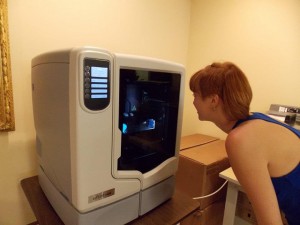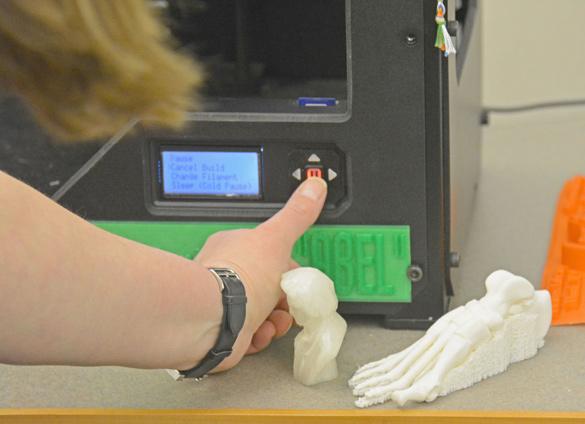The advent and spread of new technologies, like that of 3D printing can transform our lives in many ways. Apart from making our  lives easier, cheaper, and more interesting, there are complications to every new technology as well, which can spill over into all areas of society.
lives easier, cheaper, and more interesting, there are complications to every new technology as well, which can spill over into all areas of society.
It’s only a matter of time before we begin finding 3D printers in nearly every library, as well as other public institutions, available for use by nearly anyone for minimal costs, or even for free. Currently, there are 3D printers located in a large number of libraries nationwide, but widespread adoption is only in its infancy, certain to gain steam over the next 12-18 months.
As more libraries begin adopting this amazing technology, and the general public begins to realize the vast number of applications for such a technology, I believe that a number of new questions will have to be answered by those overseeing its use. Questions such as “Should we allow anyone of any age to use our printers?”, “Should we censor what is printed by these machines?”and “What sort of oversight and rules should be put into place?”
A recent article, written by the Chicago Tribune, asked several employees of public libraries to weigh in on how they will, or already do, treat this new technology.
“We’ll print anything as long as it’s not obscene,” said David Lee King, digital services manager at the Topeka & Shawnee County Public Library in Kansas, noting that it is nearly impossible for an employee of a library to truly know what is being printed out on their machines.
After all, you can’t expect a library employee to be able to determine if a particular piece of plastic that is printed, is a part for a gun, or just for a toy. The same way in which someone could come to the library and read a book, magazine, or internet publication to learn the steps needed to build a bomb out of ordinary over-the-counter chemicals, people can take advantage of just about any new technology. Some people, like King, feel that it should not be the librarian’s responsibility to see to it that all uses are for peaceful purposes.
Kate Marek, Dean of Dominican University’s Graduate School of Library and Information Science, has a a different view, however. She feels that there should be a set of somewhat strict rules and guidelines in place for those wishing to use a publicly owned 3D printer.
“It’s a new and developing area,” Marek said. “It’s good to think through some of these things before you open it up to the public. It’s not intrusive if you say, ‘You can’t do anything that’s illegal,’ “It is intrusive to say, ‘What are you going to make?’ and ‘Let me think about whether I’ll let you do it.'”
Different public entities are bound to put in place different sets of rules. Marek, like King, brings up some very good points, ones which certainly won’t fall on deaf ears. It will be up to each individual institution to ultimately determine what they think are the best ways of dealing with a developing technology like 3D printing. There are no right or wrong answers as long as those responsible for overseeing such uses continue to develop their set of guidelines, as the technology expands.
No matter how a library decides to regulate their own machines will likely spark a debate by someone, no matter what that decision encompasses. How do you think that Libraries and other public institutions should deal with such questions? Let us know in the 3D printer censorship forum thread on 3DPB.com
Subscribe to Our Email Newsletter
Stay up-to-date on all the latest news from the 3D printing industry and receive information and offers from third party vendors.
You May Also Like
Gorilla Sports GE’s First 3D Printed Titanium Cast
How do you help a gorilla with a broken arm? Sounds like the start of a bad joke a zookeeper might tell, but it’s an actual dilemma recently faced by...
Nylon 3D Printed Parts Made More Functional with Coatings & Colors
Parts 3D printed from polyamide (PA, Nylon) 12 using powder bed fusion (PBF) are a mainstay in the additive manufacturing (AM) industry. While post-finishing processes have improved the porosity of...
$25M to Back Sintavia’s Largest Expansion of Metal 3D Printing Capacity Since 2019
Sintavia, the digital manufacturing company specializing in mission-critical parts for strategic sectors, announced a $25 million investment to increase its production capacity, the largest expansion to its operations since 2019....
Velo3D Initiates Public Offering in a Bid to Strengthen Financial Foundations and Drive Future Growth
Velo3D (NYSE: VLD) has been among a number of publicly traded 3D printing firms that have attempted to weather the current macroeconomic climate. After posting a challenging financial report for 2023,...

































